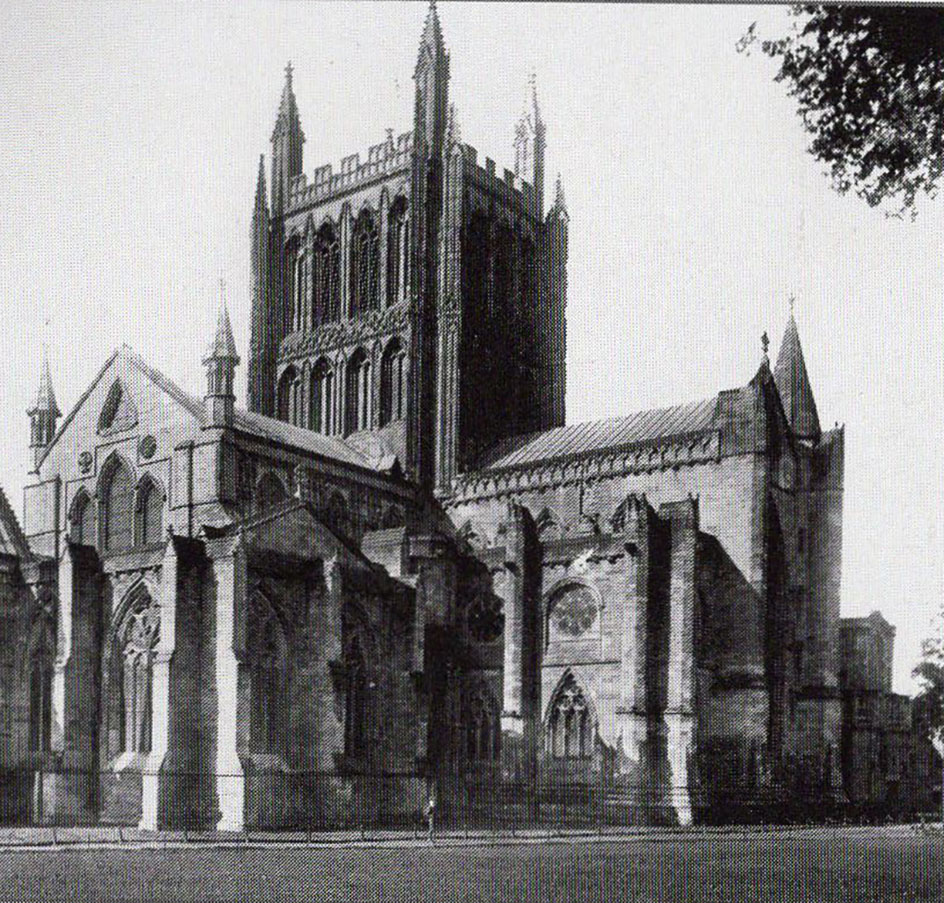
An English bishopric - Hereford
English conquest of, and migration into, this originally Welsh area started in the early medieval period, with a Mercian bishop established at Hereford by the end of the 8th century. The English called the area 'Ergingafeld' - Archenfield. It may have been in retaliation for increasing English influence in the area that Gruffydd ap Llywelyn laid Archenfield waste in 1055. Harold Godwinson reconquered it for the English crown. It was not, however, 'English'.
After the Norman Conquest Archenfield remained legally and administratively distinct. Domesday lists the landholders in Herefordshire Archenfield and Wales - 'In Herefordscire in Arcenefelde & in Walis'. Archenfield had not been absorbed into the English system at the time of Domesday; it was in the hands of the King and paid renders of the typical Welsh sheep and honey. Although Archenfield Churches are listed in the Book of LLandaff, they do not appear in Domesday; another indication that the area was not completely English.
A Norman, William FitzOsbern, was given the earldom which in the reign of Edward the Confessor had been Harold Godwinson's; a large earldom which included Hereford, although his base was actually Winchester. By summer 1067 Norman soldiers were constructing a castle in Hereford. French settlers seem to have moved into the area too. Domesday records a Frenchmen with one plough at King's Caple, on the other side of the Wye from Hentland. But there were five Welshmen with their ploughs there too. There were Welsh speakers in the area into the 19th century.
Urban became Bishop of Glamorgan in 1107. Some time between 1115 and 1119 he took the title 'Bishop of Llandaff' and placed the seat of the bishopric at a place that had been a Christian place of worship from the 6th century. Llandaff, the 'Church on the River Taff' was just a few miles from Cardiff, 'the fort of the Taff', and is the name by which the diocese has been known ever since. In 1120, to enhance the sanctity of his new cathedral Urban had Dyfrig's body moved there from Bardsey. Urban was in dispute with the Bishop of St David's to his west and the Bishop of Hereford to his north-east. As the successor to Dyfrig, Urban claimed the parishes of Erging, which included Hentland 'hennlann dibric & lannteliau in uno cimiterio'. The Book of Llandaff listed the parishes which were claimed by LLandaff and which the neighbouring diocese refused to concede.
In a aprovisional ruling in 1128 Pope Honorius II (1124-1130) decided provisionally in favour of Llandaff and large areas of Herefordshire and Deheubarth were awarded to Urban. The case dragged on into the reign of Pope Innocent II (1130-43). Ultimately Llandaff lost: Hentland is in the Hereford diocese.
The parish contains one fine medieval moated manor house, Gillow Manor, which has an interesting history.
A more mysterious monument is Chapel Tump, which was quite clearly once a moated house or small castle, but about which nothing is known.